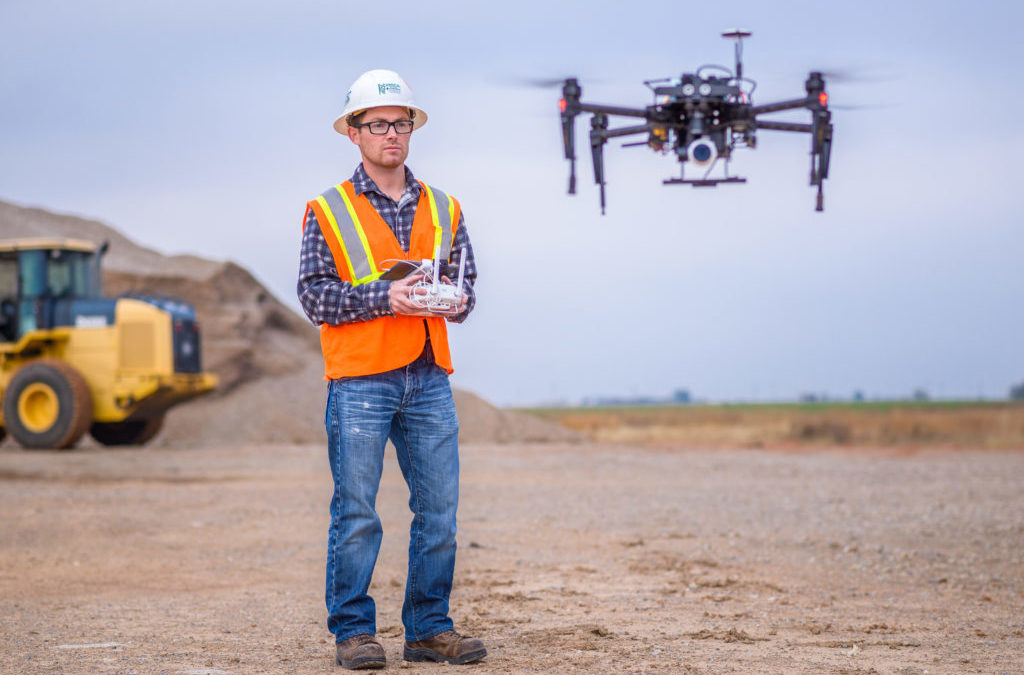The next generation in farm implements wowed an audience of Oklahoma agriculture and economic development leaders at Enid’s recent Future of Food Forum.
It looked nothing like a new combine or a tractor.
It was a drone, a pilotless, remote control aircraft often associated with military applications or hobbyists.
This “farm implement” hovered over the floor of a large auditorium at Enid’s Central National Bank Center as the audience at the forum heard a discussion of its capabilities.
Sponsored by the Enid Regional Development Alliance, the Oklahoma Center for the Advancement of Science and Technology and the UAS Initiative Cluster, the annual Future of Food Forum featured discussions of drone flying regulations, Oklahoma’s role in the industry, potential benefits of drones to agriculture and other industries and, finally, flying demonstrations.
“We have some very innovative companies in our area that are just now getting involved in utilizing drones, specifically in the area of agriculture,” said Brent Kisling, executive director of the Enid Regional Development Alliance. “We wanted to highlight what they are doing and also encourage others to start looking at this new technology as well.”
Brady Sidwell, founder of a drone-related business called Arbitrage Alpha Solutions in nearby Kremlin, told the audience that “drones aren’t the headline” in their use as a farming tool.
Rather, it is the attached sensors and the ability to map large acreages for precision applications of fertilizers or pesticides that makes drone technology useful in agriculture, he said.
As he spoke, Sidwell held a device known as the GreenSeeker crop sensing system, which was developed at Oklahoma State University. Sensors such as the GreenSeeker are what make drone technology useful in farming, he said.
“We collect data with the drone and then use the drone image that is now calibrated with the GreenSeeker to apply variable rate, say, nitrogen application to a field,” Sidwell said. “We really have to show the economic feasibility of the data.”
Sidwell is a serial entrepreneur who also operates a commercial grain elevator, a commodity trading company and a seed business, in addition to the drone company.
Josh O’Brien, team leader with the UAS Cluster Initiative, moderated a panel discussion that featured Sidwell; Shane McKinzie, Aerial Services Manager with Enid’s TSC Environmental; and Brady McCullough, superintendent/CEO at Autry Technology Center.
“Hopefully, in our work we can help build the unmanned aerial systems industry in the state,” O’Brien said. “We’re really trying to fill the gaps we think might exist in connecting companies with potential service providers, researchers with companies that may want to partner and everything in between.”
O’Brien also highlighted the potential for Oklahoma companies in obtaining funding to develop drone technology through the federal Small Business Innovation Research (SBIR) program.
“What makes SBIR such a great resource is it is non-dilutive money — you don’t have to give up a piece of your company,” O’Brien said. “It’s an opportunity to get funds to develop your company and take it to the next level.”
Jamey Jacob, Ph.D., director of the Unmanned Systems Research Institute at OSU, said that Oklahoma already is a “major player” in the drone industry. Drones are finding their place not only in farming but energy, aviation and other industries.
“All of those industries can be interlinked and benefit from autonomous systems and unmanned aircraft,” Jacob said. “There’s a bright future for all unmanned systems.”
The forum concluded with a flying demonstration of a drone remotely controlled by a TSC Environmental pilot who explained some of its capabilities as it hovered over the floor of the arena.
“I think agriculture has embraced the unmanned systems way earlier than most of us expect,” said Dennis Altendorf with the Governor’s Aerospace Autonomous Systems Council. “The data they collect and the sensors that are on board these platforms, it’s unbelievable what you can do in terms of crop health, surveying. It’s unlimited.”
Story provided by: Daily Oklahoman / News 9
Written by: Jim Stafford with OCAST


